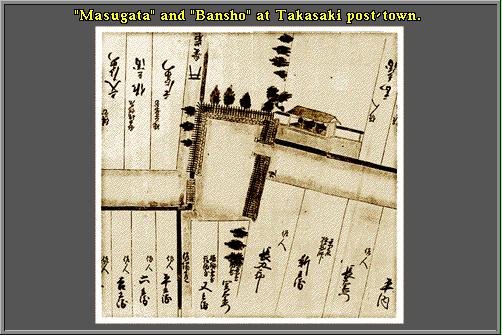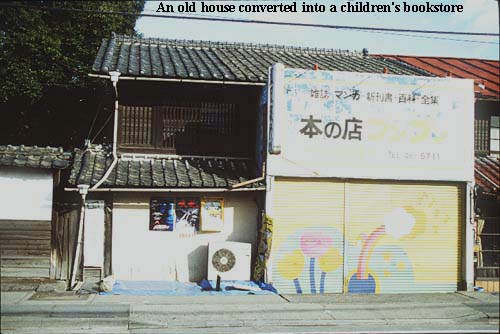
Takasaki was better known as a castle town than a post-town. With a registered population of 3,235 in 1843, it was one of the largest towns on the Nakasendo. This figure, of course, does not include the samurai and their families who resided at the castle since they were exempt from census counts. In most castle towns, as many as 50 per cent of the population were of the samurai class. Despite its large size, however, Takasaki had few inns. There was no honjin or waki-honjin and there were only fifteen inns for regular travelers. This probably reflected the fact that travelers did not want to stay too close to the castle, a symbol of the Tokugawa shogunate’s power.
Leaving the town, the Nakasendo is overlaid by modern highway for the three mile journey to the next post-town, Kuragano. In 1843, this town was also comparatively large, with a population of just over 2,000. Here there were 32 inns, a honjin (now a supermarket site), and two waki-honjin, [P 1-55-1] one of which survives.
Departing Kuragano, the route soon crosses the river via a modern bridge, although the posts of the original wooden bridge are still visible nearby. On the opposite shore, the road follows the levee and it is severely exposed to the northerly winds, especially in the winter. Three and a half miles after Kuragano, the post-town of Shinmachi is reached. It is a modern town now and little remains of the old post-town. Shinmachi was again a fairly large post-town with 1,437 people and 43 inns in 1843. It lies on the border between Gunma and Saitama prefectures.

It is five more miles from here to the next post-town, Honjo, along quiet country roads.

